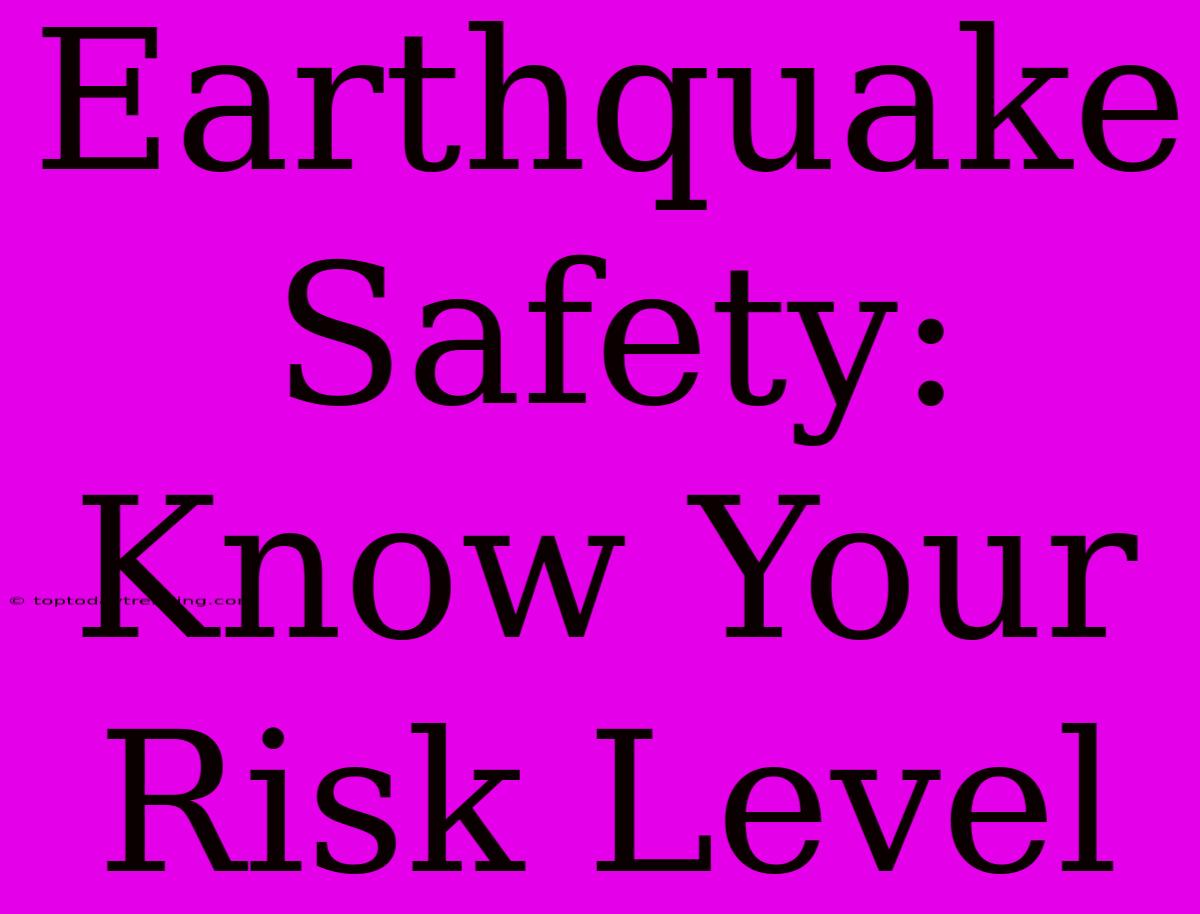Earthquake Safety: Know Your Risk Level
Earthquakes are a powerful and unpredictable force of nature that can cause significant damage and devastation. While we cannot control when or where they occur, we can take steps to prepare ourselves and our families for the possibility of an earthquake. Knowing your risk level is the first step towards ensuring earthquake safety.
Understanding Earthquake Risk
Every region has a different risk level based on factors like:
- Fault lines: Areas near active fault lines are more susceptible to earthquakes.
- Seismic activity: History of earthquakes in the region.
- Soil conditions: Soft, loose soil amplifies seismic waves, leading to greater damage.
- Building codes: Older buildings may not be built to withstand earthquake forces.
How to Find Your Risk Level:
- Consult online resources: Websites of national geological surveys, like the U.S. Geological Survey (USGS), provide maps and information on earthquake risk levels.
- Contact your local emergency management agency: They can provide specific information about your region's earthquake risk.
Taking Action Based on Your Risk Level
Once you know your risk level, you can take appropriate steps to prepare:
High-Risk Areas:
- Secure heavy objects: Anchor furniture, bookcases, and appliances to walls to prevent them from falling over.
- Learn how to shut off gas, water, and electricity: This can prevent hazards in case of leaks or damage.
- Practice earthquake drills: Familiarize yourself and your family with the "drop, cover, and hold on" procedure.
- Develop an evacuation plan: Identify safe meeting points and routes for your family and neighbors.
- Prepare an emergency kit: Store essential supplies such as water, food, first-aid supplies, a flashlight, and a battery-powered radio.
Medium-Risk Areas:
- Follow the same safety measures as high-risk areas, but with a focus on preparedness rather than immediate danger.
- Consider earthquake insurance: Protect your home and belongings from potential damage.
Low-Risk Areas:
- While the risk may be lower, it's still important to be aware of the potential for earthquakes.
- Review basic safety measures and ensure you have an emergency kit.
- Stay informed about earthquake preparedness tips and resources.
Beyond Risk Assessment: Additional Safety Measures
Regardless of your risk level, it's essential to:
- Learn about earthquake-resistant construction: Understand how newer buildings are designed to withstand seismic forces.
- Be informed about earthquake warning systems: Some regions have early warning systems that can give you precious seconds to prepare.
- Stay informed about earthquake safety tips: Follow reputable sources like the Red Cross and local emergency agencies for updated information.
Earthquake safety is not just about surviving an earthquake, it's about thriving afterward. By understanding your risk level, taking appropriate precautions, and staying informed, you can prepare yourself and your family for any eventuality.

